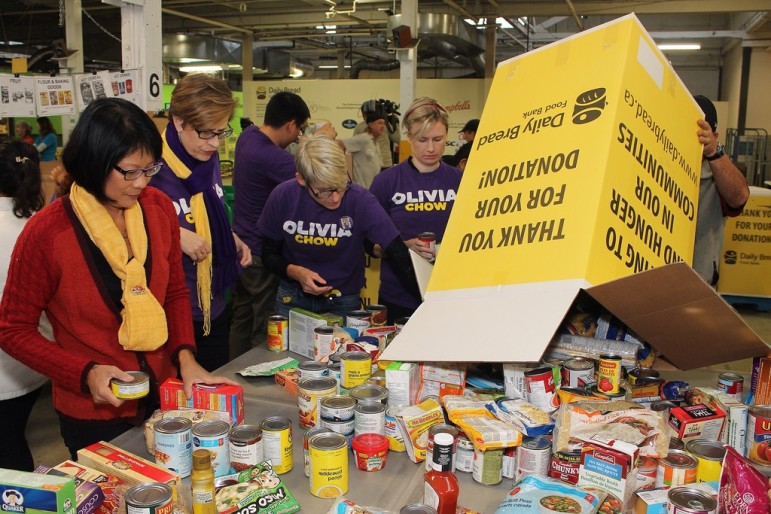
December 2, 2015; Wall Street Journal
When you gather your bag of canned goods to donate to your local food drive between now and the end of the year, here’s something you need to know: You are part of a seasonal spike in donations. For the Second Harvest Food Bank of Middle Tennessee, the increase in donations in November and December almost doubles what’s donated the rest of the year. (Many of the canned goods that are donated are put on the shelf for the days of spring and summer, when donations are much fewer.) The surge in donated goods leaves food banks with many perishable items that must be quickly distributed before expiration. The challenge is to move the food, and minimize the wasted amounts. Logistics to the rescue!
The 30 million pounds of food donated to the national network of 200 food banks known collectively as Feeding America present a huge logistical challenge. Here’s what else you need to know about food banks: This seasonal big surge in logistics is similar to the surge at Amazon.com and Wal-Mart, two large businesses that have poured much time and technology into creating automated warehouses and high-tech solutions to managing inventory. Only recently have nonprofit groups been able to prosper from the same technology that helps move the growing e-commerce.The American Logistics Aid Network was created to provide humanitarian relief in a post-Katrina environment. It consists of hundreds of supply-chain businesses that are experts in warehousing, cold storage, and distribution. ALAN’s uniqueness is in bringing together businesses, volunteer organizations and relief agencies to offer supply-chain management and expertise to nonprofit and humanitarian organizations.
As the demand for fresh produce and preservative-free food is increasing, inventory management software has at the same time become more affordable. Ian Hobkirk, a warehouse consultant, says that nonprofits are better able to afford the technology now. One innovation is “voice-guided picking” technology, which directs the worker via headphones as to where to go in the warehouse to find specific items. Second Harvest studies its data to determine where to locate new facilities to save on transportation costs.
Sign up for our free newsletters
Subscribe to NPQ's newsletters to have our top stories delivered directly to your inbox.
By signing up, you agree to our privacy policy and terms of use, and to receive messages from NPQ and our partners.
Exact Macola, an Ohio company, has helped make all this possible through donating their business software to food banks. The software records the dates goods are received and their “use-by” dates. This enables alerts that indicate when food is expiring and where they are in the warehouse. Since Second Harvest starting tracking dates with Exact Macola’s software, they have cut their waste by fifty percent.
Food banks have a huge reputation for moving food to areas of need. “The last thing you want is this fabulous donations that you can’t use quickly enough,” says ALAN’s Executive Director, Kathy Fulton. She’s pleased with the growing emphasis on logistics and the tangible payoff for the food banks.
Remember those articles talking about the future jobs in nonprofits needing more technology focus? That future is here. Ms. Fulton claims that once the volunteers are trained in the new technology, they are often very desirable job prospects for other logistics jobs.—Jeanne Allen











